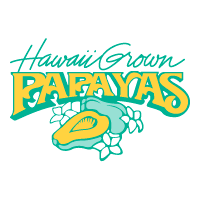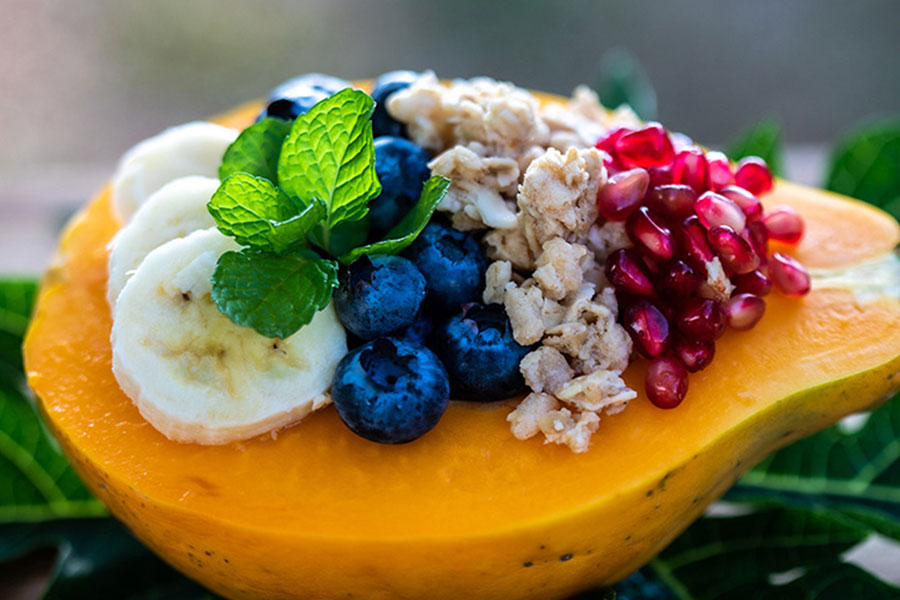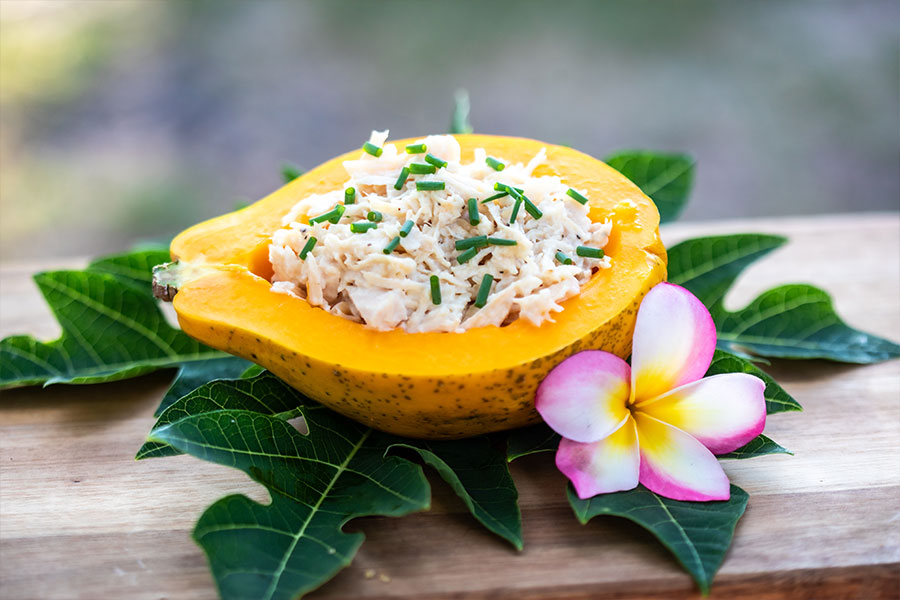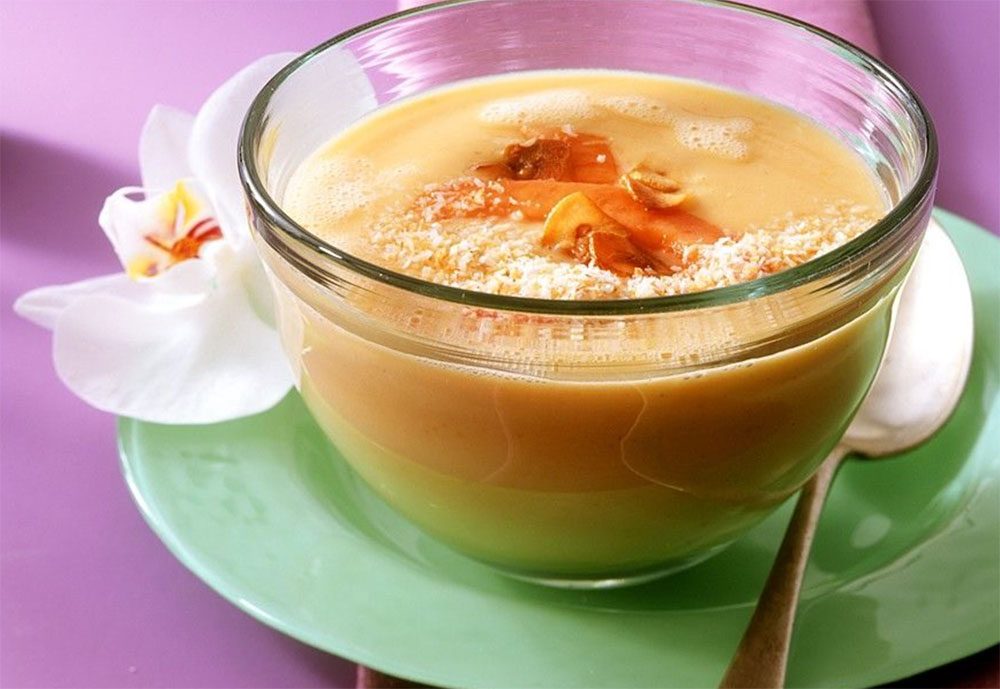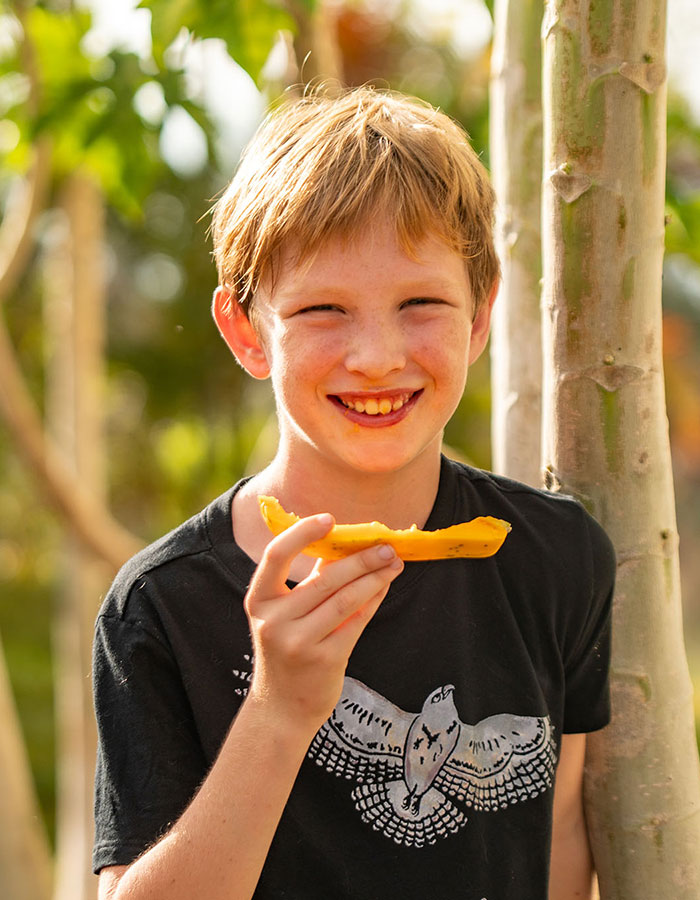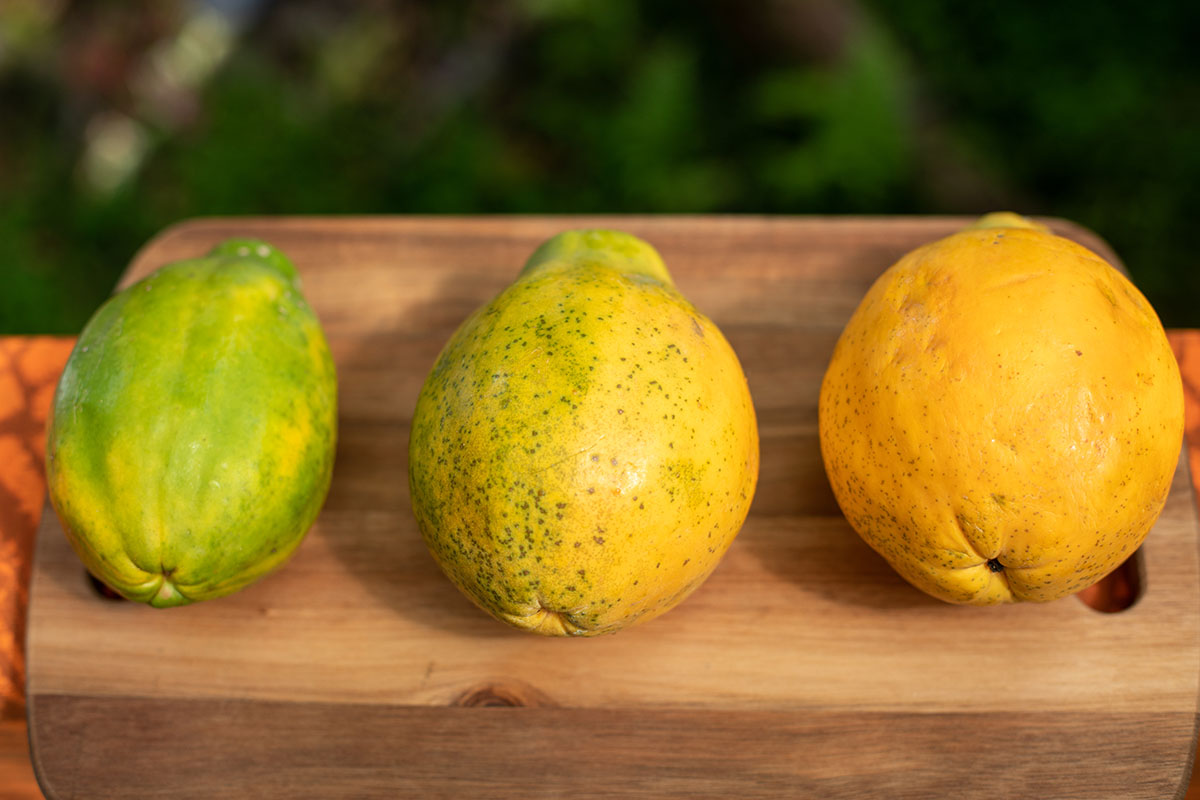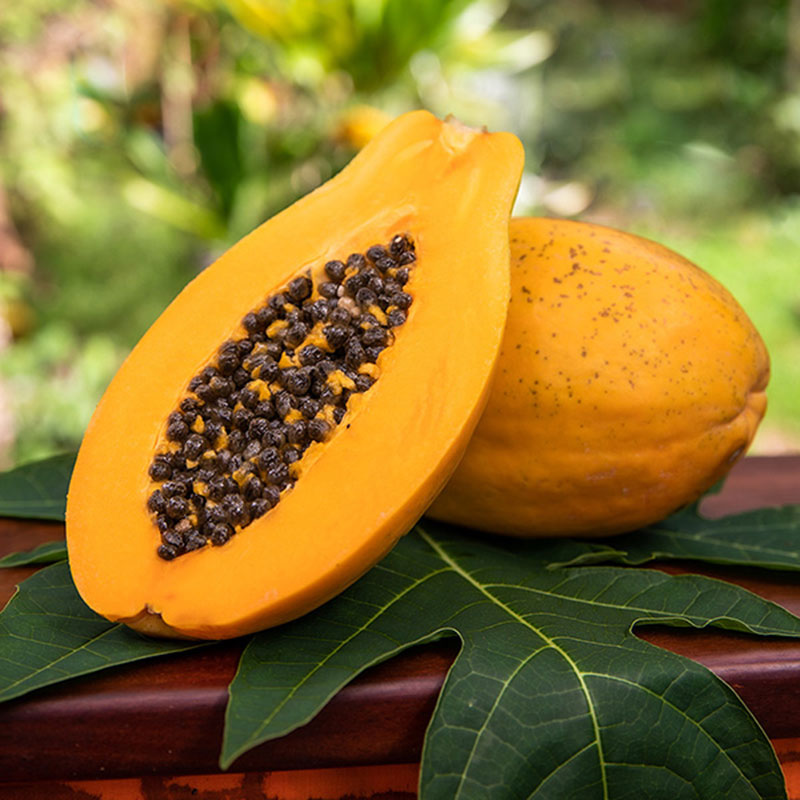Love Hawaii Papaya?
Learn about Hawaii Papaya, the nutritional benefits, how to source and check out our papaya recipes.
Health and wellness experts backed by scientific studies tout papayas as a perfect part of a healthy lifestyle.
RICH IN PROTEIN
Papayas are rich in protein-digesting enzymes that aid digestion, such as papain and chymopapain. They are also low in fat and are a good source of fiber, which has been shown to lower high cholesterol levels.
ANTIOXIDANTS
Papayas are an excellent source of three powerful antioxidants: Vitamins C and E and beta-carotene. These nutrients help prevent the oxidation of cholesterol that may damage the blood vessel walls and eventually cause heart attack or stroke.
LYCOPENE-RICH FRUIT
In a scientific study, men who regularly ate lycopene-rich fruits such as papaya and drank green tea were less likely to have prostate cancer than those who consumed the least lycopene-rich foods.
VITAMIN A
Vitamin A-rich foods such as papaya can help smokers reduce chances for developing emphysema.
AIDS IN VISION
Other data indicates that eating 3 or more servings of fruit per day may lower risk of age-related macular degeneration, the primary cause of vision loss in older adults.
BOOSTS IMMUNITY
Vitamins C and A, which are produced in the body from beta-carotene, are both needed for the proper function of a healthy immune system
Papaya Recipes
Indulge in the delightful flavors of Hawaii with our collection of mouthwatering papaya dishes below. Discover simple yet sensational recipes that will transport your taste buds to the tropical paradise of the Aloha State!
GET PAPAYA RECIPES
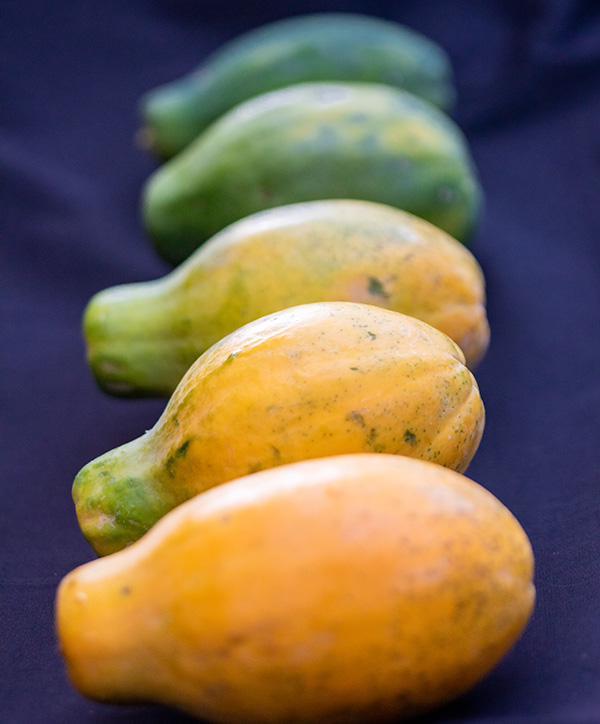
Selecting & Storing
The Perfect Papayas
Just like a banana, papaya tastes best when not too green, and not too ripe – it’s perfect when its three quarters yellow. To keep the same perfect taste and texture, put it in the fridge.
100% Delicious!
Hawaii Papayas are picked tree ripe all year-round and are always shipped fresh to your grocer!
Pounds Picked Annually
%
